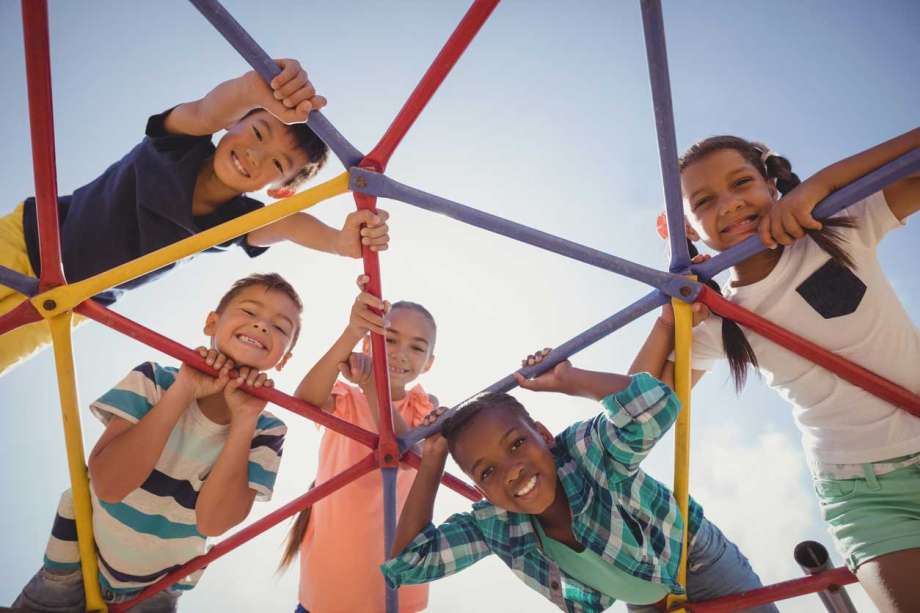The Importance of Play in 21st Century Learning

Child’s play. It’s a term used to describe a task that’s easily tackled and quick to master. Mindless work. But are the games children play just a mindless distraction, or is there an intrinsic value to play? Many experts would tell you that play is a fundamental activity in a child’s learning process.
Kristen Walter, a teaching and learning specialist for Crayola writing for P21, put it this way:
Play encourages physical and fine motor skills – building eye-hand coordination, balance, and endurance through full body motions and kinesthetic awareness. Play builds a social connectedness where children experience the exchange of ideas. Whether building a fort out of boxes or negotiating the rules for a game of tag, children have to listen to others and communicate. . . . Play enables a child to bring together their existing knowledge with new ideas to solve problems, making new understandings. Stretching their creative abilities provides complex choices and problem solving in new and innovative ways, in this they are learning to be critical thinkers.
More: 21 Free Educational Apps for Kids
Play for Learning

That simple game of hide and seek isn’t just a fun way to pass a rainy day. Kids are learning problem-solving skills, patience, critical thinking skills, and the concepts of fairness and taking turns.
Even video and online games have their place learning. We’ve come a long way from The Oregon Trail and Where in the World is Carmen San Diego?.
Learning-based games like those found on Curious World engage students quickly and easily with concepts and rules that are easy to pick up, high-quality graphics that are fun and dynamic and engaging characters that kids recognize.
But in the quest to make learning more fun and interactive, according to NPJ Science of Learning, experts are even looking at commercial video games as educational resources.
Look at Minecraft, for example. Kids can apply math and science skills to build their own worlds. They learn to work within the limits of their world and apply critical thinking skills to solve problems and test those limits. Schools across the country use the Minecraft education edition to teach coding, as well as 21st Century Skills.
At the root of all game-based learning is the idea that everyone, kids and grownups alike, learn best by doing. According to Michigan State University Extension, “We retain 10 percent of what we see, 30 to 40 percent of what we see and hear, and 90 percent of what we see, hear and do.”
Studies show that kids need at least 60 minutes of activity a day, and that they retain more of what their learning, focus more quickly and exhibit faster cognitive processing if they are active.
So how do you apply gaming and activity to traditional learning? The answer is, you don’t. Instead, gaming – whether it be in the real or virtual worlds – should shape the learning process.
Here are some interesting ways schools and parents are incorporation play into learning and how you can apply.
Collaborative Gaming
Games in which multiple students play at the same time can teach 21st Century Skills like critical thinking and problem solving, communication, flexibility and adaptability, initiative and self-direction and leadership. In a study published in Frontiers in Human Neuroscience, can even enhance language learning skills. The reward-based system of online games triggers greater attention in game players. If a player is rewarded for reading a text and following its instructions to advance in the game, they are more likely to build the needed language skills to make that happen.
In Poptropica, for example, kids create their own avatars to explore islands and solve mysteries. With every mystery they solve, they are rewarded with upgrades to their avatar. Most islands teach kids about historical events in a medium that kids can connect with.
Project-Based Learning
Project-based learning is becoming increasingly popular in schools across all disciplines. Students use collaborative learning skills to build, experiment, act out and discover. It can be used to teach a number of 21st Century Skills.
For example, the project-based learning modules on TeacherVision help students come together to master key learnings in Science, Social Studies, Math and ELA. In their project, Zombie Ants! – Symbiotic Relationships, students learn about viruses and bacteria as well as symbiotic relationships in nature. Students then create their own thriller movie using the concept of zombie ants, learning how to collaborate, create and dabble in media literacy.
Traditional Games Can Teach, Too

We may think of video games and project-based learning as somewhat newer ways to introduce play into learning, although The Oregon Trail first appeared in 1970 and projects have been a part of learning for many generations. Still, the classic games children play can also teach valuable life and academic skills.
We mentioned hide and seek before as a collaborative, active game that helps kids learn social-emotional skills. But any simple game that children play helps them learn.
More: Top 10 Backyard Party Games for All Ages
Playing house or role-playing helps children learn leadership and empathy. Card games can teach cardinal numbers, early math concepts and the importance of taking turns. For older kids, Monopoly teaches basic money management skills.
Playing and games fill an important role in a child’s learning process. It fosters creativity and imagination, encourages teamwork and prepares them for life as an adult. Incorporating play into school and even everyday lessons helps build foundations for learning and thriving in the real world.